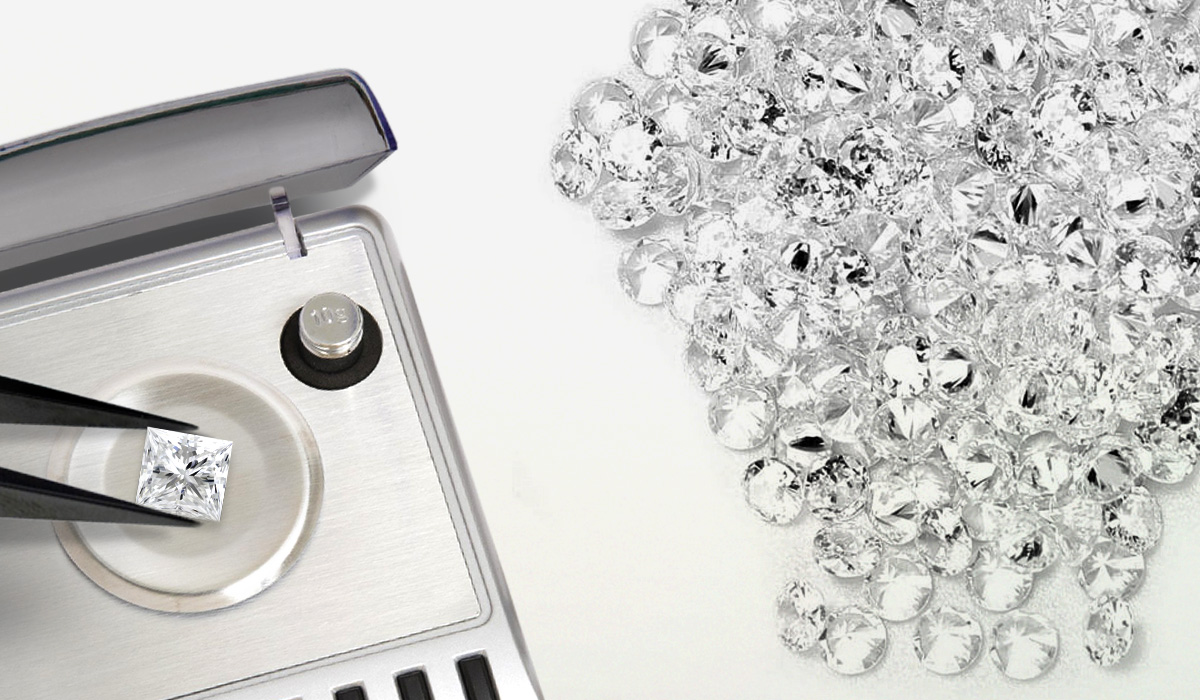When it comes to purchasing a diamond, many buyers focus on the size of the stone, and for a good reasonThe size of a diamond is an essential factor that impacts its appearance and value, whether it’s a natural or lab-grown diamondThe trend toward lab-grown diamonds has grown immensely over the years, offering an ethical, sustainable, and often more affordable alternative to mined diamondsHowever, even with this shift, the concept that diamond size matters remains ever-relevantIn this article, we’ll explore why diamond size matters, particularly when it comes to choosing lab-grown diamonds.
The Relationship Between Diamond Size and Its Value
The size of a diamond is one of the first things that potential buyers considerLab-grown diamonds, despite their growing popularity, are no differentIn both natural and lab-grown diamonds, the size directly influences the price, making it a primary factor for many buyersLarger diamonds typically come at a higher cost because they are rarer and require more materialsThe more significant the diamond, the more expensive it is likely to beFor those looking for a substantial visual impact without breaking the bank, lab-grown diamonds can offer a more affordable solution compared to mined diamonds of similar size.
The Aesthetic Appeal of Larger Diamonds
When shopping for a diamond, diamond size matters for aesthetic reasons, especially for engagement rings, necklaces, or other pieces of fine jewelryA larger diamond naturally catches the eye and creates a more striking appearanceFor those who want a bold statement piece, size is essentialLab-grown diamonds are no exception—people purchasing lab diamonds can achieve the look they desire, often for less than what they would pay for a mined diamond of the same sizeA larger lab diamond can deliver the same visual impact and brilliance as its mined counterpart, which is a significant selling point for many consumers.
The Ethical Advantage of Lab-Grown Diamonds
In addition to cost and appearance, the size of a diamond matters when considering the ethical implications of purchasing a diamondMined diamonds come with concerns about environmental damage and labor exploitationOn the other hand, lab-grown diamonds are created in a controlled, sustainable environment, making them a more ethical choice for buyersEven larger diamonds, which would typically be more costly and resource-intensive if mined, can be produced in labs without the same negative impact on the planetTherefore, diamond size not only influences the beauty and value of the stone but also ties into broader concerns about sustainability.
How Lab-Grown Diamonds Are Made
Understanding how lab-grown diamonds are created can help explain why size matters when buying these stonesLab-grown diamonds are produced using two primary methods: High Pressure High Temperature (HPHT) and Chemical Vapor Deposition (CVD)Both methods simulate the natural processes that occur deep within the Earth, allowing diamonds to grow in a lab environmentWhile the size of lab-grown diamonds can vary, achieving larger diamonds often requires more advanced technology and a longer production timeWhether small or large, lab diamonds possess the same chemical and physical properties as their natural counterparts, making them just as brilliant, durable, and desirable.
The Impact of Diamond Size on Setting Choices
The size of the diamond also plays a significant role in determining the type of setting you choose for your piece of jewelryDiamond size matters when selecting the right setting because larger diamonds require more intricate designs to highlight their beautyA larger stone often demands a setting that can support its weight and accentuate its sizeFor example, a solitaire setting is a classic choice for showcasing a large diamond, while smaller diamonds may work well with more detailed or vintage-inspired settingsLab-grown diamonds allow buyers to choose from a wide variety of settings that complement their desired size and style.
Finding the Perfect Balance Between Size and Quality
While diamond size is important, it’s essential to balance it with other factors such as cut, color, and clarityThese four characteristics make up the “Four Cs” of diamond grading, and they all play a role in determining the overall appearance and value of a diamondDiamond size matters, but it’s not the only factorA well-cut diamond with excellent clarity and color can look more dazzling than a larger diamond with poor qualityThis is particularly relevant when shopping for lab-grown diamonds, as they often offer better quality for the priceBuyers should consider all aspects of a diamond to find the perfect balance between size and overall quality.
The Future of Diamond Size and Trends in the Market
Looking ahead, it’s clear that diamond size matters to many consumers, but preferences are shifting in response to trends in the diamond marketWhile large diamonds have traditionally been associated with luxury and prestige, there’s an increasing interest in smaller, more sustainable optionsLab-grown diamonds are helping to redefine traditional notions of size and value by offering an affordable yet luxurious alternativeAs more people learn about lab-grown diamonds and their benefits, the demand for larger stones at a lower cost will likely increaseThis shift will continue to challenge the traditional diamond market, allowing buyers to enjoy larger stones without the ethical concerns and astronomical prices associated with mined diamonds.
Conclusion
Whether you’re purchasing a lab-grown diamond for an engagement ring, a necklace, or any other piece of jewelry, diamond size matters in various waysIt impacts the price, aesthetics, and even the ethical considerations of your purchaseLab-grown diamonds provide an excellent opportunity for those who desire a large, beautiful diamond without the environmental and social concerns associated with mined diamondsBy understanding how diamond size influences your choice, you can make a more informed decision and find the perfect stone that matches your style, budget, and values.

